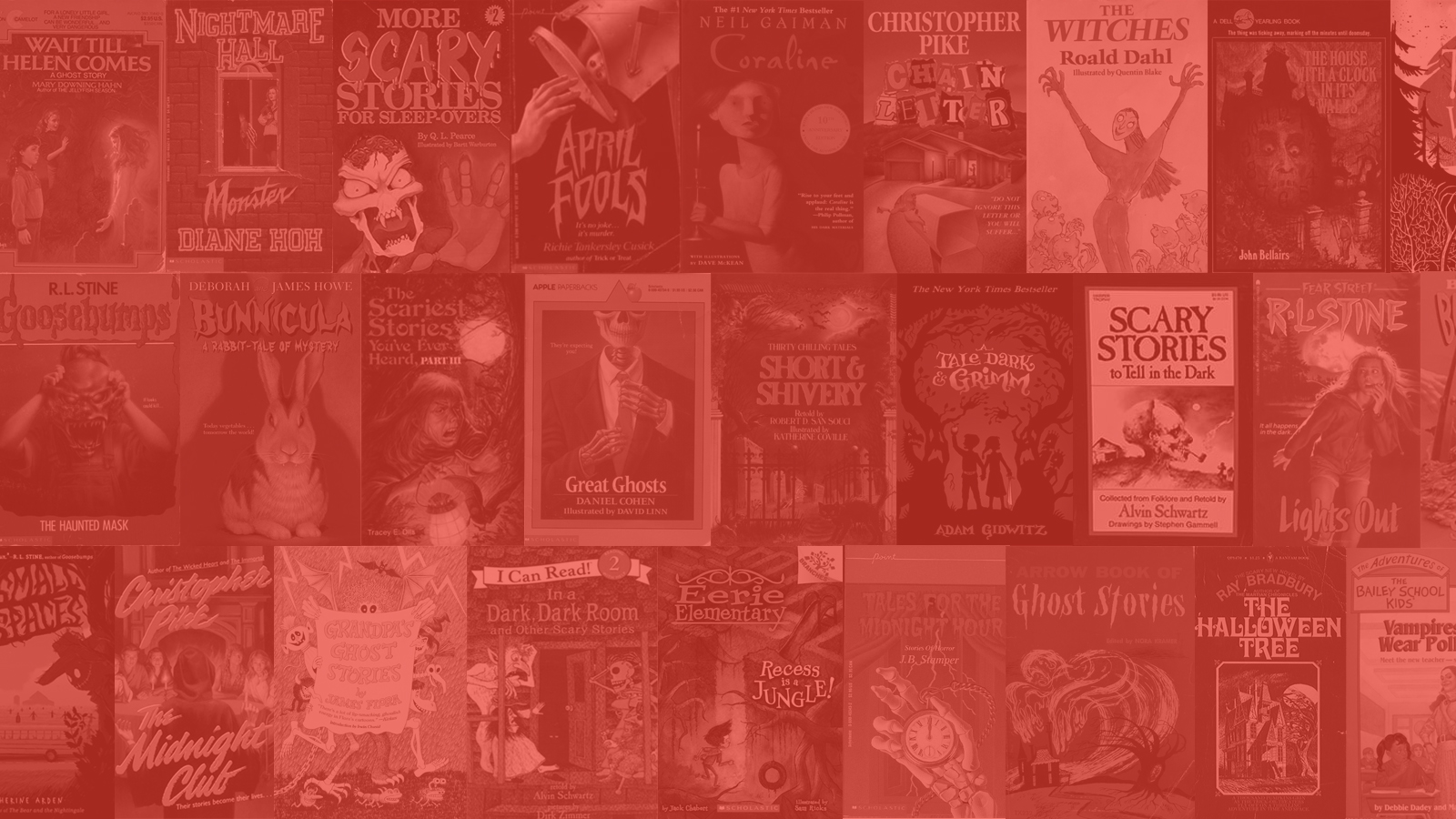I made an entire documentary about scary books for kids, specifically the Scary Stories to Tell in the Dark books.
During that time I interviewed the family of author Alvin Schwartz, I interviewed authors R.L. Stine, Bruce Coville, Q.L. Peirce, Debbie Dadey, and many scholars and folklorists. All to talk about scary children’s books in all its many facets.
Why?
Overview
Horror is fascinating. And it begins in childhood. It’s fascinating because our first frights are when we are kids, and our first love of those frights are found during that time. And the scary kids books we discovered when we were young usually became a lifelong interest… for some, an obsession.
So after the long journey to make the documentary, I wanted to use Scary Studies as an avenue to continue to explore these topics. And this is part of it.
This is a Guide to Scary Books for Kids that spans the past 50 years. I plan on updating the list and this guide regularly to best reflect the influence these books have had on millions of people over the years.
There are some important things to note, as any list must take liberties with what is selected and why. You can read About This List below if you wish. But if you don’t care about that and just want to skip to it, feel free to browse the Table of Contents below.
ABOUT THIS LIST
Defining Scary Kids Books. As when dealing with any labels, people can differ in their definitions. I use those 3 words as the basis:
- Scary. Like the horror genre in general, it is complex. Scariness is subjective, and something doesn’t cease to be horror just because you don’t particularly find it scary. The same goes for children’s books. So in general, if a kids book includes a certain number of horror tropes, I place it in the horror or “scary” genre. If there is a certain amount of humor or adventure, some may question how much it belongs, and that is fine. But overall, I tend to think that books that include monsters and gothic things are innately catering to children’s interest in the genre. So depending on the context, it often is included. But it is debatable.
- Kids. To be considered a children’s book, it needs to be written and marketed specifically to kids, at least in some cases. Some 6th graders are already reading Stephen King. That’s great. But what we’re talking about here are kids books. We’re talking about books that cater to the beginning stages of affection for the horror genre, at a time when children are just beginning to find interest in the macabre. And arguably, when they are the most impressionable. And so these need to be books that are marketed towards kids of ages 15 and below. These are mostly considered “middle grade” or early YA. And I’m primarily not including books that cater to ages 5 and below. There are many great picture books about monsters and witches and such, which are great, but just not what the focus is here. So mid-elementary to mid-high school age children. In most cases, I discuss what ages the various books are marketed towards (while acknowledging marketing efforts don’t always reflect actual readership).
- Books. The interest in horror for kids takes many forms. Movies, cartoons, video games, and now the internet. This is a guide that focuses on specifically books, both in text and a mix of text and visual art. In the case of children’s books, they are often collections of short stories, but chapter books and short novels become more and more common with older ages.
Organizing by Decade is Flawed. But helpful. Take note that many books and authors span multiple decades, so placing them in just one of them is often a flawed system. But in general, after reading many people talk about these books over the years, I found categorizing based on the decade is a helpful way for people to browse the books that took hold with certain generations of kids.
This Is a Curated List. It doesn’t include all books and authors, and it will change over time. Inevitably choices are made. But the attempt here is to outline many of the titles and authors that seemed to take hold and be culturally relevant in some way. Some became hugely popular with millions of children growing up at the time. Other books perhaps grew to have a following over the years, or just have fixed themselves into a lot of people’s memories for various reasons. And some of the books are foundational. Many books that are talked about often now wouldn’t exist without certain books and authors that came before.
ADDITIONAL TITLES
There is a large number of titles, series, and authors that didn’t quite make the list, but are notable in the scary kids genre. I’m listing just a few of those below. This is an expanding list, so I’m eager to hear from people on social media and comments here on what books and authors belong on this list.
Tailypo: A Ghost Story
Fungus the Bogeyman
Bony-Legs
Choose Your Own Adventure Books
L.J. Smith Books
Fright Time Books
Favorite Scary Stories of American Children
Strange Matter Books
Horror High Books
Caroline B. Cooney Books
Last Updated on February 2, 2022.
Pages: 1 2 3 4 5

